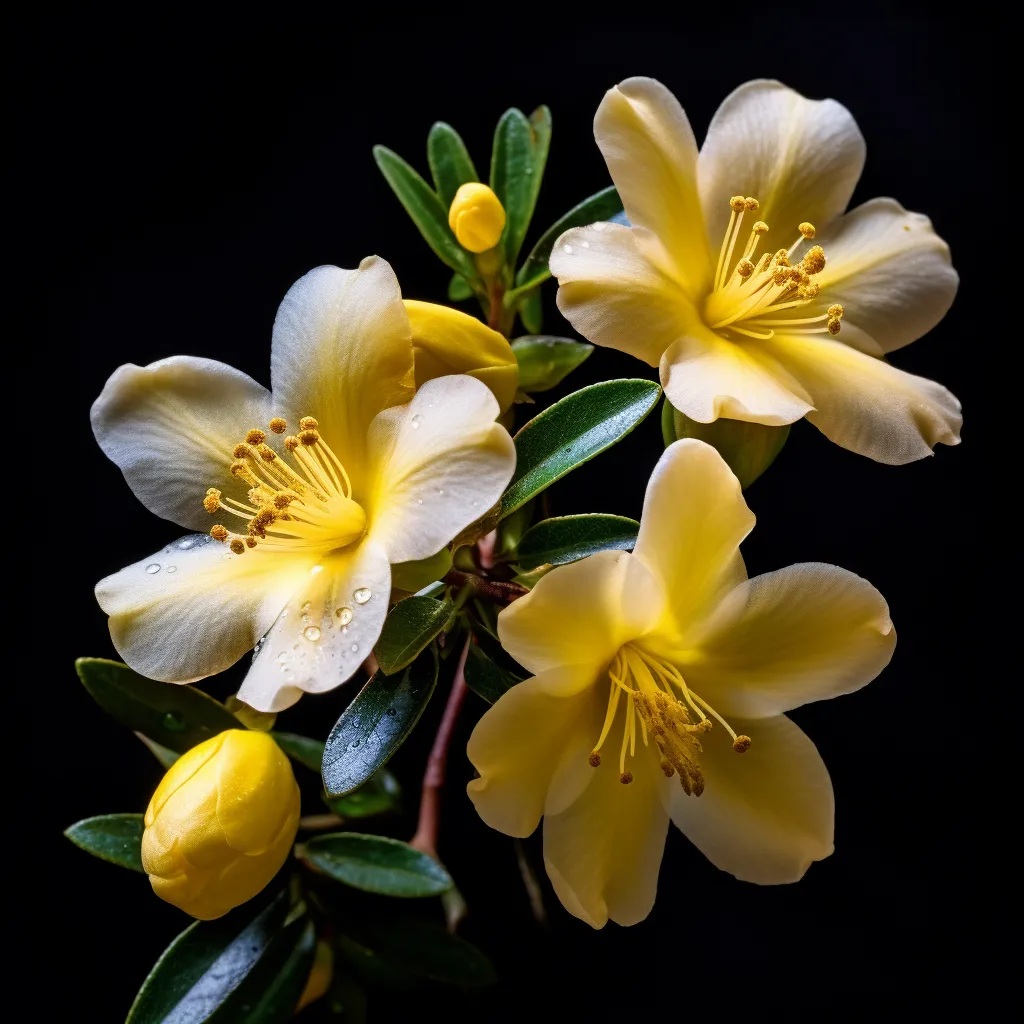Story of Day :
Contents
Hibbertia scandens (Snake Vine) Plant Care Tips
Welcome fellow garden enthusiasts! Today, we are going to dive into the world of Hibbertia scandens, also known as Snake Vine.
This vibrant and versatile plant is a great addition to any garden.
Let’s explore some care tips to help you grow and maintain this beautiful species.
Understanding the Snake Vine
Hibbertia scandens is a fast-growing evergreen vine native to Australia.
Its common name “Snake Vine” comes from its long tendrils that resemble the slithering motion of snakes.
This plant produces stunning yellow flowers that add a pop of color to your garden.

Planting Location and Soil Requirements
The Snake Vine thrives in full sunlight but can also tolerate partial shade.
When selecting a location for planting, ensure it has good drainage as the plant prefers slightly moist soil.
Sandy loam or well-draining soils with medium fertility are ideal for this species.
- Choose a location with at least 6 hours of direct sunlight per day.
- Avoid areas with heavy clayey or waterlogged soil, as it may lead to root rot.
- If your soil lacks drainage, consider creating raised beds or adding organic matter like compost or sand to improve it.
Watering Needs and Maintenance

To keep your Snake Vine healthy and flourishing:
- Water regularly during dry periods, especially when young plants are establishing their root systems.
- Aim for deep watering rather than frequent light sprinkling; this encourages the roots to grow deeper into the soil.
- Water at the base of the plant, avoiding wetting the foliage, which can lead to fungal diseases.
- Apply a layer of mulch around the base of your Snake Vine to help retain moisture and suppress weed growth.
Pruning and Training
Snake Vines are vigorous climbers, so regular pruning and training are essential:

- Prune after flowering to maintain an attractive shape and encourage new growth.
- Cut back any dead or damaged stems to promote healthy growth.
- If you want to control its spread, prune more heavily in late winter or early spring before new growth starts.
.
Pest and Disease Control
The Snake Vine is generally pest-resistant but can occasionally face some challenges:
-
Aphids: These small insects can be controlled by spraying cold water on affected leaves or using a mild insecticidal soap solution.
Encouraging natural predators like ladybugs can also help keep aphid populations in check.
Fungal Diseases: Overwatering or poor air circulation around your plants can lead to fungal diseases such as powdery mildew.
To prevent these issues:
- ::Ensure adequate spacing between plants for proper airflow.
::Avoid overhead watering; instead, water at the base of your plant.
::Remove any infected leaves promptly and dispose of them away from your garden area.
::Apply a fungicide if necessary following label instructions.

Climbing Structures
The Snake Vine requires support to climb and can be trained on various structures:
- Trellis: Install a trellis against a wall or fence, providing the Snake Vine with vertical support.
- Arbor or Pergola: Create an enchanting entrance or seating area by training the Snake Vine over an arbor or pergola.
.
Closing Thoughts
The Hibbertia scandens, also known as the Snake Vine, is a stunning and low-maintenance addition to any garden.
By following these care tips, you can enjoy its beautiful yellow flowers and lush foliage year after year.
Remember to choose a suitable planting location, provide proper watering and maintenance, control pests and diseases when necessary, and offer adequate support for its climbing nature.
Happy gardening!